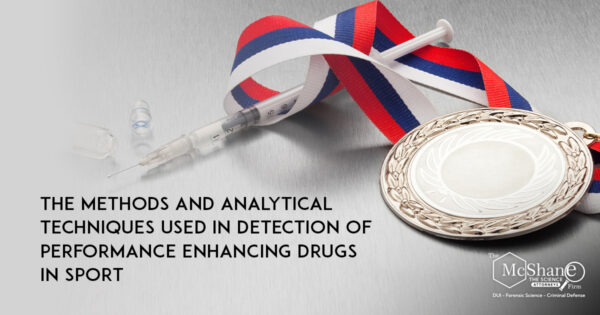Throughout the history of drug testing in sports, various analytical techniques have been used to detect an ever-evolving range of performance-enhancing substances. Some of the key techniques and substances tested for include:

- Gas Chromatography-Mass Spectrometry (GC-MS): GC-MS is a widely used analytical technique for detecting a range of substances, including anabolic steroids, stimulants, and masking agents. The technique involves vaporizing the sample, separating its components using gas chromatography, and then identifying the components based on their mass spectra. GC-MS is highly sensitive and selective, making it a valuable tool for detecting minute quantities of banned substances.
- Liquid Chromatography-Tandem Mass Spectrometry (LC-MS/MS): LC-MS/MS is another powerful technique used for detecting substances such as erythropoietin (EPO), peptide hormones, and diuretics. This method combines the separation capabilities of liquid chromatography with the sensitivity and selectivity of mass spectrometry. By incorporating multiple stages of mass spectrometry (tandem mass spectrometry), LC-MS/MS can provide highly accurate identification of target compounds and their metabolites in complex samples.
- Indirect Enzyme-Linked Immunosorbent Assay (ELISA): ELISA is an immunoassay technique used for the detection of substances like human growth hormone (hGH) and erythropoietin (EPO). This method relies on the specific binding between an antigen (the target substance) and its corresponding antibody. The presence and concentration of the target substance can be determined based on the degree of color change resulting from an enzyme-catalyzed reaction. While ELISA is highly sensitive, it may not be as specific as mass spectrometry-based techniques.
- Carbon Isotope Ratio Mass Spectrometry (CIR-MS): CIR-MS is a specialized technique used to differentiate between endogenous (naturally occurring) and exogenous (synthetic) anabolic steroids. This method involves determining the ratio of carbon-13 to carbon-12 isotopes in a sample, as synthetic steroids typically have a different isotope ratio than their naturally occurring counterparts. CIR-MS has been instrumental in catching athletes who use synthetic testosterone and other anabolic steroids.
- Hematological Profiling: Hematological profiling involves the analysis of an athlete’s blood parameters, such as hemoglobin concentration, hematocrit, and reticulocyte count, to detect blood doping practices like autologous blood transfusions and erythropoiesis-stimulating agents (ESAs). The Athlete Biological Passport (ABP) program, implemented by WADA, uses longitudinal monitoring of hematological parameters to identify abnormal variations in an athlete’s blood profile that may indicate doping.
These analytical techniques have evolved alongside the development of new performance-enhancing substances and methods, and anti-doping organizations continue to refine and expand their testing capabilities. As doping techniques become more sophisticated, the importance of advanced analytical methods and ongoing research in anti-doping science becomes increasingly critical to preserving the integrity of sports.


